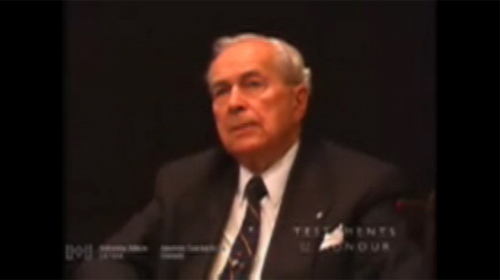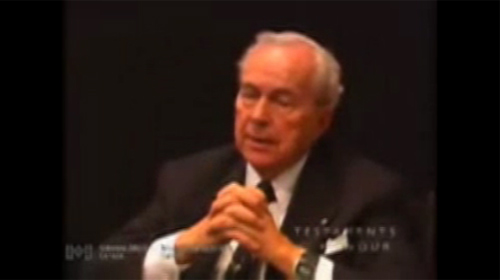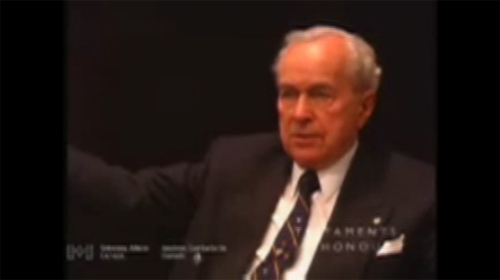Flying a Mustang
Heroes Remember
Flying a Mustang
Transcript
Description
Mr. Rohmer experiences both Spitfires and Mustangs, and elects to join aerial reconnaissance in Mustangs. He describes the nature of their duties.
Richard Heath Rohmer
Major General Rohmer was born in Hamilton, Ontario on January 24, 1924. He enlisted with the Royal Canadian Air Force on his eighteenth birthday. He had received some training in Canada before being shipped overseas to Bournemouth for further training on both Spitfires and Mustangs. He chose to fly a Mustang and was finally able to get into operations in the Fall of 1944.
General Rohmer provided reconnaissance for D-Day, the Falaise Gap and the Liberation of the Netherlands.
After the war, General Rohmer instructed Spitfire pilots on how to attack in the air at Gunnery Instructor School and later went back to college in Ontario, Canada. After graduating from college he went on to practice law. General Rohmer has received several awards throughout his illustrious career including the Distinguished Flying Cross, the Canada Defence Medal and is an Officer of the Order of Canada just to name a few. General Rohmer is also a best selling author.
Meta Data
- Medium:
- Video
- Owner:
- Veterans Affairs Canada
- Duration:
- 03:14
- Person Interviewed:
- Richard Heath Rohmer
- War, Conflict or Mission:
- Second World War
- Location/Theatre:
- Europe
- Branch:
- Air Force
- Units/Ship:
- 436 Squadron
- Rank:
- Major-General
- Occupation:
- Pilot
Related Videos
- Date modified:






